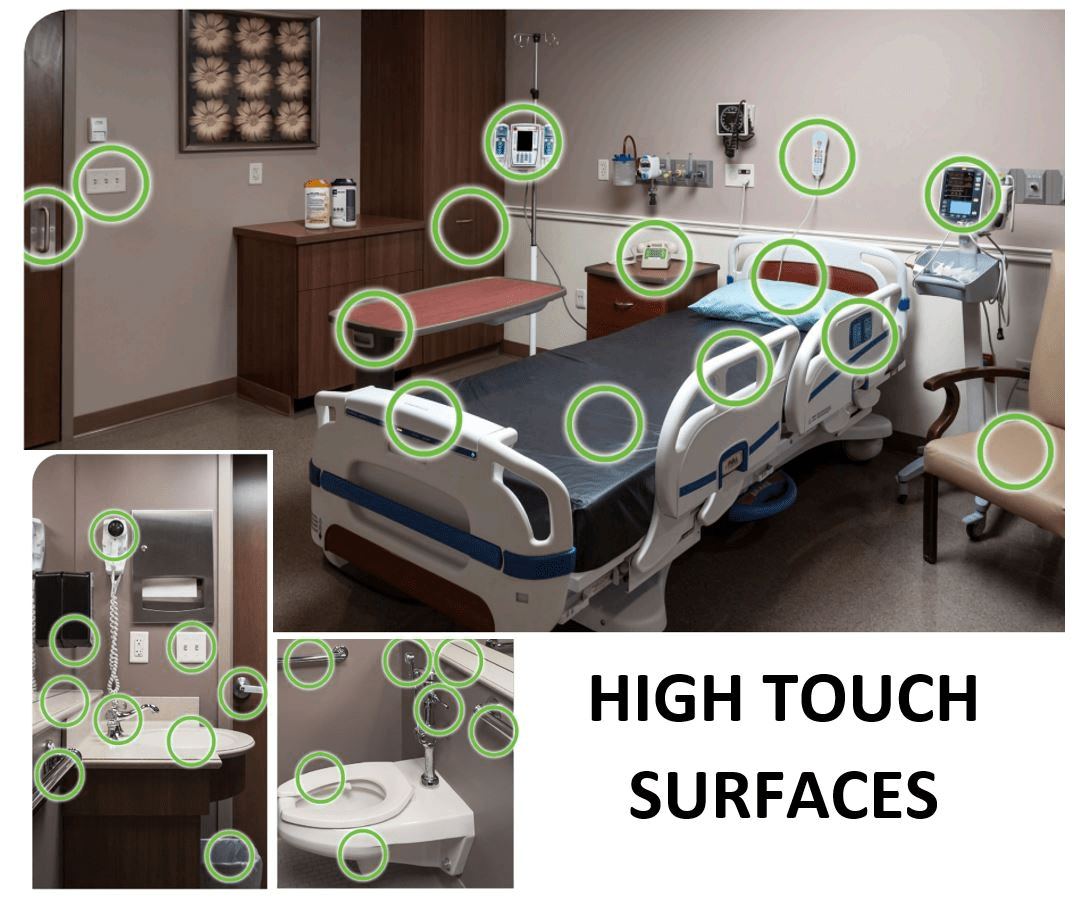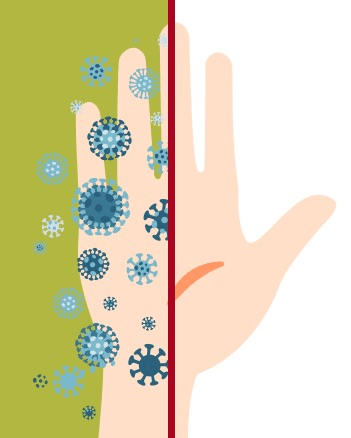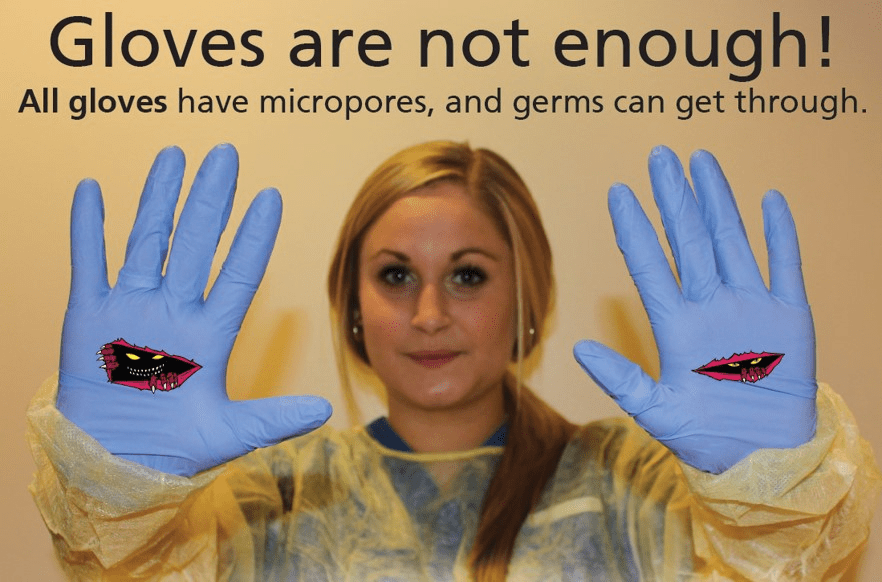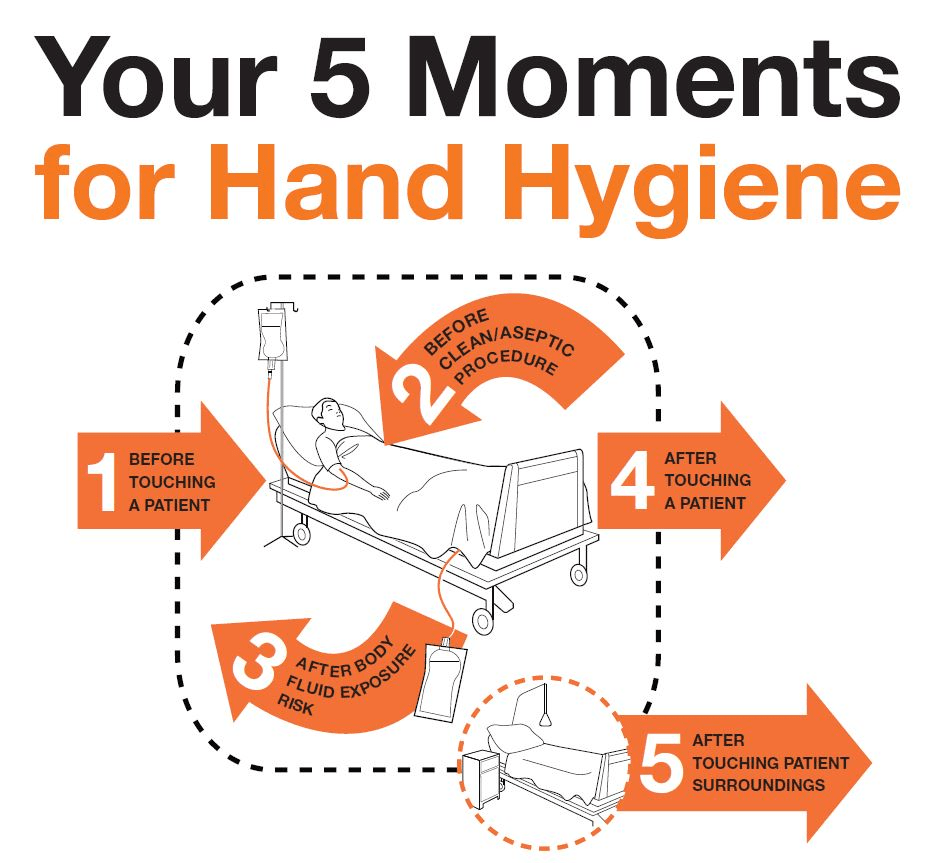The most effective way to prevent transmission of infections and microorganisms is to:
What is Perform Hand Hygiene?
The most common route for transmission of germs in health care settings.
Contaminated hands of healthcare workers!

Your patient has C.diff, how is hand hygiene performed?

These are not allowed to be worn in clinical settings because they harbor pathogens and make asepsis difficult to achieve.
What are artificial nails and excess jewelry (rings, bracelets) on the hands.
Name 10 high touch surfaces in a patient room that require cleaning / disinfecting regularly.

You don't need to clean equipment you take from the clean utility room to the patient room
FALSE
20-30 seconds
What is the amount of time you should perform hand hygiene?

When cleaning an area or equipment, this basic principle should always be applied to avoid cross contamination. We should always clean from ______________ to _______________.
We should always clean from “CLEAN” to “DIRTY”.
What is the first thing you will do if splashed with body fluid from a patient?
Wash site with soap & water or irrigate eyes/nose/mouth with clean water or saline
Note time of incident
Notify person in charge
Note name/location of source patient
Notify OMS by calling OMS hotline 973-971-5819
If OMS closed, notify off shift Nursing Manager by calling the hospital operator who will page him/her. You will be directed to the ED for evaluation and possible treatment. Contact OMS the next business day for follow up.
True or False: Wearing gloves is an alternative to performing hand hygiene.
What is False: Gloves have micro pores that let organism through.
Can patients on Contact Precautions ambulate in the hallway?
Yes - but only if continent of stool / urine. Wound has clean bandage and is contained. Clean gown on pt and performs HH prior to leaving room. Staff may wear PPE if assisting patient.
What is the very FIRST step of hand hygiene at a sink?
Check for paper towels.
Name the WHO's 5 moments of Hand Hygiene:

When disinfecting surfaces, chemicals need to remain wet on a surface to effectively kill microorganisms.
What is Contact Time or Dwell Time?
True or False: The daily risk of CAUTI (Catheter acquired UTI) increases by 3%-10% each day that the catheter is in place.
TRUE. If the Foley Catheter is in place for >30 days, the risk for a CAUTI is almost 100%. The best way to prevent a CAUTI is to not put the foley catheter in, try alternative external devices, maintain a closed system, and remove it as soon as clinically possible.